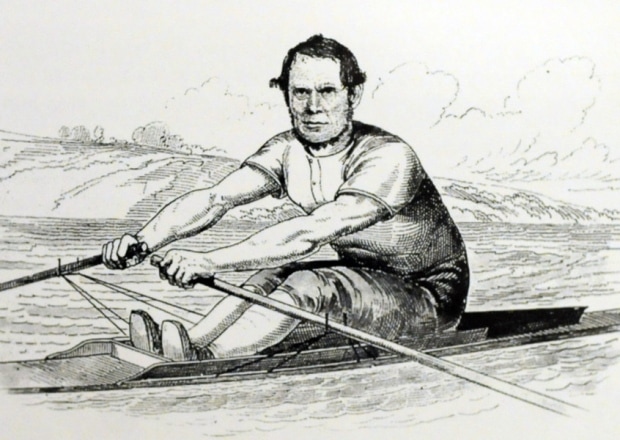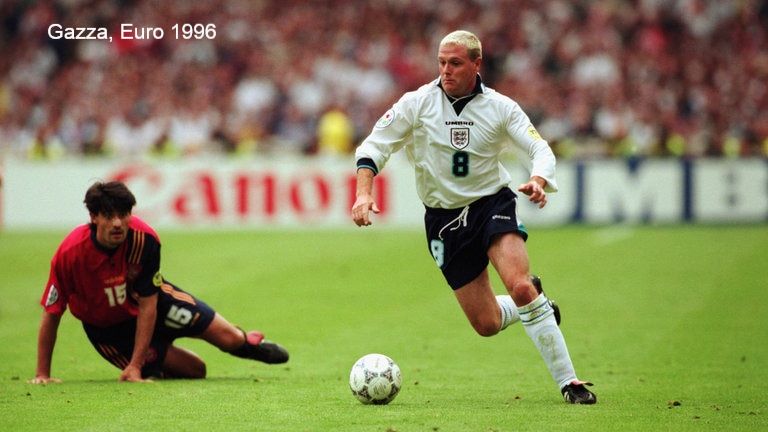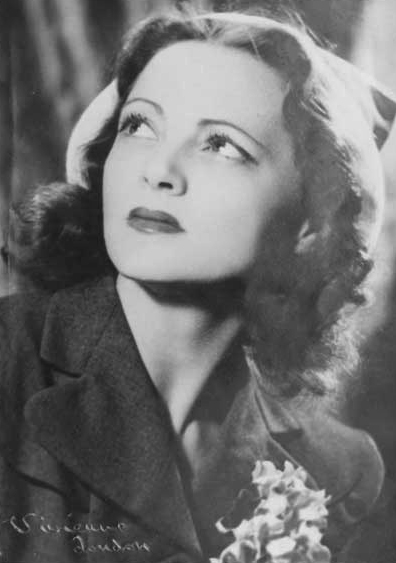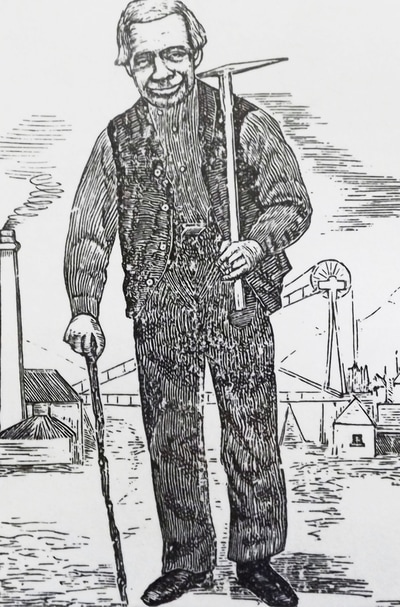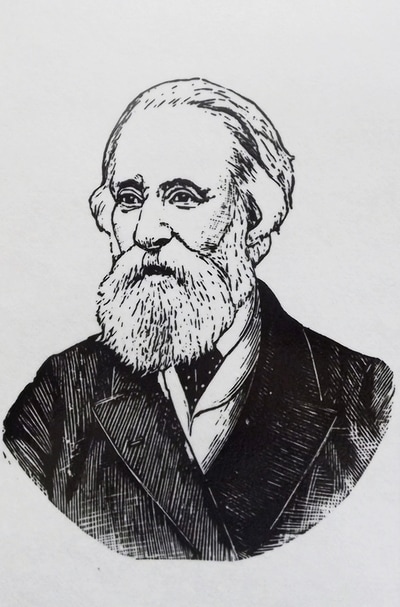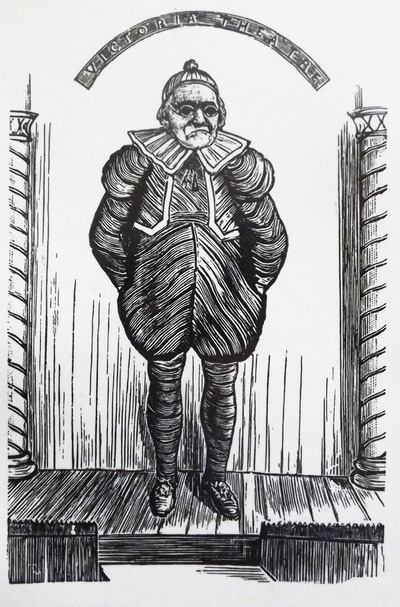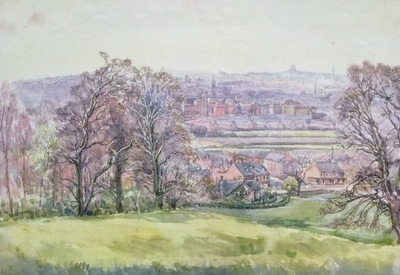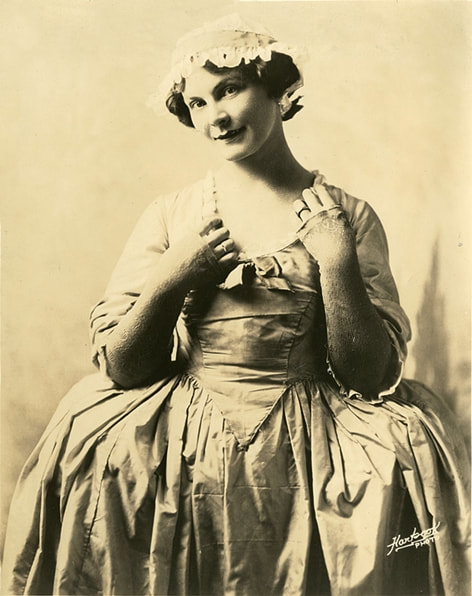Harry Clasper...
Born 1812 Dunston.
Harry was a Tyneside professional rower and boat builder. He was an innovative boat designer who pioneered the development of the racing shell and the use of outriggers. He is said to have invented spoon-shaped oars.
Harry Clasper was born in Dunston in 1812 in 1825 his family moved to Jarrow and at the age of 15 Harry began work at Jarrow Pit but he decided that working in the pits was not for him and he became an an apprentice as a ships carpenter in Browns Boatyard Jarrow. When his family finally moved back to Dunston Harry found work as a coke burner and Wherryman for the Garfield Coke Company at Derwenthaugh as wherryman he made use of the tides and current to move his load useful knowledge for any young man thinking of pursuing a career as a racing oarsman.
In 1836 Harry married his cousin, Susannah Hawks, who was a member of the wealthy Hawks Family on their wedding certificate Harry made his mark with an X being unable to read or write while his wife signs for herself in confident flowing hand.
Harry formed a racing crew with his brother William and two other men from the area, another Clasper brother Robert was the coxswain while Harry stroked the boat, named Swalwell.They soon began to win races defeating more experienced crews and becoming known as the Derwenthaugh Crew, Harry's working life changed again when he took tenancy of the Skiff Inn at Swalwell and he began to combine boat building and being a pub landlord on the same site.
Harry built two skiffs for himself the first the 'Hawk' in 1840 and then the 'Young Hawk' 1841 in which he won the Durham Regatta single sculls race in 1842, Harry thought his crew could do better and his mind was set on defeating a crew from London. The challenge was accepted and a race
took place on the 16th July 1842 from the Tyne Bridge to Lemmington a distance of five miles, Harry's boat the St Agnes proved far to heavy compared to the Londoners and a easy victory ensued for the Thames boat.
Harry was almost alone in seeing the defeat as an opportunity, he had already began to build a new four: now that he knew it had to be much lighter than the St Agnus. First he completed the five strake mahogany four ' The Five Brothers' with which he won a race at the 1844 Thames Regatta and then the single strake skiff in which Harry raced against the champions of the Thames, Robert Coombes, on the Tyne in December 1844.
The moment had come for the Claspers to avenge the defeat of three years ago, the final of the fours race in June 1845 would be contested by the Claspers in the 'Lord Ravensworth' the Thames were led by Robert Coombes, and the Londoner lead by Pocock, the race started badly it had already began when they were asked if they were 'ready' Coombes crew had pulled out half a length but slowly the Claspers gained control and the 'Lord Ravensworth' came home one and a half lengths ahead, it was the first time the Londoners had lost on their home river, the Thames.
Massive celebrations accompanied the return of the Claspers to Newcastle on the following Monday, a large crowd tuned out, bells were rung from All Saints Church, guns at Hawks and Crawshays works were fired, but one crew member was missing, Harry had stayed in London to further his shipbuilding business, he sold the 'Lord Ravensworth' to Lord Kilmorey for £80:00 and had picked up commission to build a new four.
Harry had reached a pinnacle of success both as oarsman and as a boat builder, he was already 33 which makes his achievements over the next
15 years all the more astonishing, he went on to gain an amazing six more victories in the Champion Fours at the Thames Regatta, when Harry won his last championship in 1859 he was 47 but still captain of the crew and still stroking the boat.
As a sculler he was for many years the top man on the Tyne and won important victories in Scotland as well, but he was just short of the class to beat the top London scullers.
Harry became a skilled and experienced coach, Robert Chambers, who would become, Tyne, Thames, England and World Sculling champion, was
trained by Harry proof that his system worked.
Harry died on 12 July 1870, probably of a stroke for his funeral, the coffin was transported from the Tunnel Inn, Ouseburn to St Mary's Church, Whickham. Part of the journey was by paddle tug on the river, travelling over part of the course that had seen so many of his triumphs. Many thousands watched the funeral procession and burial. A memorial monument was erected over his grave in St Mary's churchyard and can still be seen there.
Born 1812 Dunston.
Harry was a Tyneside professional rower and boat builder. He was an innovative boat designer who pioneered the development of the racing shell and the use of outriggers. He is said to have invented spoon-shaped oars.
Harry Clasper was born in Dunston in 1812 in 1825 his family moved to Jarrow and at the age of 15 Harry began work at Jarrow Pit but he decided that working in the pits was not for him and he became an an apprentice as a ships carpenter in Browns Boatyard Jarrow. When his family finally moved back to Dunston Harry found work as a coke burner and Wherryman for the Garfield Coke Company at Derwenthaugh as wherryman he made use of the tides and current to move his load useful knowledge for any young man thinking of pursuing a career as a racing oarsman.
In 1836 Harry married his cousin, Susannah Hawks, who was a member of the wealthy Hawks Family on their wedding certificate Harry made his mark with an X being unable to read or write while his wife signs for herself in confident flowing hand.
Harry formed a racing crew with his brother William and two other men from the area, another Clasper brother Robert was the coxswain while Harry stroked the boat, named Swalwell.They soon began to win races defeating more experienced crews and becoming known as the Derwenthaugh Crew, Harry's working life changed again when he took tenancy of the Skiff Inn at Swalwell and he began to combine boat building and being a pub landlord on the same site.
Harry built two skiffs for himself the first the 'Hawk' in 1840 and then the 'Young Hawk' 1841 in which he won the Durham Regatta single sculls race in 1842, Harry thought his crew could do better and his mind was set on defeating a crew from London. The challenge was accepted and a race
took place on the 16th July 1842 from the Tyne Bridge to Lemmington a distance of five miles, Harry's boat the St Agnes proved far to heavy compared to the Londoners and a easy victory ensued for the Thames boat.
Harry was almost alone in seeing the defeat as an opportunity, he had already began to build a new four: now that he knew it had to be much lighter than the St Agnus. First he completed the five strake mahogany four ' The Five Brothers' with which he won a race at the 1844 Thames Regatta and then the single strake skiff in which Harry raced against the champions of the Thames, Robert Coombes, on the Tyne in December 1844.
The moment had come for the Claspers to avenge the defeat of three years ago, the final of the fours race in June 1845 would be contested by the Claspers in the 'Lord Ravensworth' the Thames were led by Robert Coombes, and the Londoner lead by Pocock, the race started badly it had already began when they were asked if they were 'ready' Coombes crew had pulled out half a length but slowly the Claspers gained control and the 'Lord Ravensworth' came home one and a half lengths ahead, it was the first time the Londoners had lost on their home river, the Thames.
Massive celebrations accompanied the return of the Claspers to Newcastle on the following Monday, a large crowd tuned out, bells were rung from All Saints Church, guns at Hawks and Crawshays works were fired, but one crew member was missing, Harry had stayed in London to further his shipbuilding business, he sold the 'Lord Ravensworth' to Lord Kilmorey for £80:00 and had picked up commission to build a new four.
Harry had reached a pinnacle of success both as oarsman and as a boat builder, he was already 33 which makes his achievements over the next
15 years all the more astonishing, he went on to gain an amazing six more victories in the Champion Fours at the Thames Regatta, when Harry won his last championship in 1859 he was 47 but still captain of the crew and still stroking the boat.
As a sculler he was for many years the top man on the Tyne and won important victories in Scotland as well, but he was just short of the class to beat the top London scullers.
Harry became a skilled and experienced coach, Robert Chambers, who would become, Tyne, Thames, England and World Sculling champion, was
trained by Harry proof that his system worked.
Harry died on 12 July 1870, probably of a stroke for his funeral, the coffin was transported from the Tunnel Inn, Ouseburn to St Mary's Church, Whickham. Part of the journey was by paddle tug on the river, travelling over part of the course that had seen so many of his triumphs. Many thousands watched the funeral procession and burial. A memorial monument was erected over his grave in St Mary's churchyard and can still be seen there.
Paul Gascoigne..
Paul John Gascoigne (born 27th May 1967)
Paul was born in Pitt Street Teams he moved to Dunston in his teens, Paul is a former England international footballer and football manager. He is also known by his nickname, Gazza. He earned 57 caps during his England career and has been described by the National Football Museum as "the most naturally gifted English midfielder of his generation".
Born and raised in Gateshead, the midfielder signed schoolboy terms with Newcastle United, before turning professional with the top tier (pre-Premier League creation) club in 1985. Three years later he was sold on to Tottenham Hotspur for a £2.2 million fee. He won the FA Cup with Spurs in 1991, before he was sold to Italian club Lazio for £5.5 million the following year. In July 1995, he was transferred to Rangers for £4.3 million, and helped the club to two league titles and two trophies. He returned to England in a £3.4 million move to Middlesbrough in March 1998. He made his debut in the Premier League in the 1998–99 season, having already featured in the 1998 Football League Cup Final. He switched to Everton in July 2000, and later had spells with Burnley, Gansu Tianma (China), and Boston United.
He was part of the England squad that reached fourth place in the 1990 FIFA World Cup, where he famously cried after receiving a yellow card in the semi-final with West Germany, which meant he would have been suspended for the final itself had England won the game. He also helped the team to the semi-finals of UEFA Euro 1996, scoring a goal against Scotland which was described as one of the best of the tournament.
Paul on Wikipeadia HERE
Paul John Gascoigne (born 27th May 1967)
Paul was born in Pitt Street Teams he moved to Dunston in his teens, Paul is a former England international footballer and football manager. He is also known by his nickname, Gazza. He earned 57 caps during his England career and has been described by the National Football Museum as "the most naturally gifted English midfielder of his generation".
Born and raised in Gateshead, the midfielder signed schoolboy terms with Newcastle United, before turning professional with the top tier (pre-Premier League creation) club in 1985. Three years later he was sold on to Tottenham Hotspur for a £2.2 million fee. He won the FA Cup with Spurs in 1991, before he was sold to Italian club Lazio for £5.5 million the following year. In July 1995, he was transferred to Rangers for £4.3 million, and helped the club to two league titles and two trophies. He returned to England in a £3.4 million move to Middlesbrough in March 1998. He made his debut in the Premier League in the 1998–99 season, having already featured in the 1998 Football League Cup Final. He switched to Everton in July 2000, and later had spells with Burnley, Gansu Tianma (China), and Boston United.
He was part of the England squad that reached fourth place in the 1990 FIFA World Cup, where he famously cried after receiving a yellow card in the semi-final with West Germany, which meant he would have been suspended for the final itself had England won the game. He also helped the team to the semi-finals of UEFA Euro 1996, scoring a goal against Scotland which was described as one of the best of the tournament.
Paul on Wikipeadia HERE
Brian Johnson.. AC/DC
(Born 5th October 1947)
Born in Dunston Brian is an english singer and songwriter. In 1980, he became the third lead singer of the Australian rock band AC/DC after the death
of their second lead singer Bon Scott. He and the rest of the band were inducted into the Rock and Roll Hall of Fame in 2003. In March 2016, Johnson stepped down from touring on the Rock or Bust World Tour due to hearing problems. On 20 May 2016, Johnson stated in an interview "I've had a pretty good run" in AC/DC and implied that he might not be returning by saying "I'm just thankful, really, that I came out of it in one piece."
Johnson was one of the founding members of the rock band Geordie formed in Newcastle in 1971. After a few hit singles, including UK Top 10 "All Because of You" (1973), the band split up in 1978. Following the death of AC/DC lead singer Bon Scott on 19 February 1980, Johnson was asked to audition for the band in London. AC/DC lead guitarist and co-founder Angus Young recalled: "I remember Bon playing me Little Richard, and then telling me the story of when he saw Brian singing [with Geordie]." He says about that night: "There's this guy up there screaming at the top of his lungs and then the next thing you know he hits the deck. He's on the floor, rolling around and screaming. I thought it was great, and then to top it off – you couldn't get a better encore – they came in and wheeled the guy off!'" Johnson was diagnosed with appendicitis later that night, which was the cause of his writhing around on stage
The band agreed immediately that Johnson's performing style fit AC/DC's music. Johnson's first album with AC/DC, Back in Black, became the second all-time best-selling album worldwide according to some estimates.
A native of Tyneside, northeast England, Johnson is known for his strong Geordie accent. In July 2014 he was awarded an honorary degree of Doctor
of Music by Northumbria University in his home city Newcastle in recognition of his significant contribution to the music industry.
View Brian on Wikipedia HERE
(Born 5th October 1947)
Born in Dunston Brian is an english singer and songwriter. In 1980, he became the third lead singer of the Australian rock band AC/DC after the death
of their second lead singer Bon Scott. He and the rest of the band were inducted into the Rock and Roll Hall of Fame in 2003. In March 2016, Johnson stepped down from touring on the Rock or Bust World Tour due to hearing problems. On 20 May 2016, Johnson stated in an interview "I've had a pretty good run" in AC/DC and implied that he might not be returning by saying "I'm just thankful, really, that I came out of it in one piece."
Johnson was one of the founding members of the rock band Geordie formed in Newcastle in 1971. After a few hit singles, including UK Top 10 "All Because of You" (1973), the band split up in 1978. Following the death of AC/DC lead singer Bon Scott on 19 February 1980, Johnson was asked to audition for the band in London. AC/DC lead guitarist and co-founder Angus Young recalled: "I remember Bon playing me Little Richard, and then telling me the story of when he saw Brian singing [with Geordie]." He says about that night: "There's this guy up there screaming at the top of his lungs and then the next thing you know he hits the deck. He's on the floor, rolling around and screaming. I thought it was great, and then to top it off – you couldn't get a better encore – they came in and wheeled the guy off!'" Johnson was diagnosed with appendicitis later that night, which was the cause of his writhing around on stage
The band agreed immediately that Johnson's performing style fit AC/DC's music. Johnson's first album with AC/DC, Back in Black, became the second all-time best-selling album worldwide according to some estimates.
A native of Tyneside, northeast England, Johnson is known for his strong Geordie accent. In July 2014 he was awarded an honorary degree of Doctor
of Music by Northumbria University in his home city Newcastle in recognition of his significant contribution to the music industry.
View Brian on Wikipedia HERE
Victoria Hopper..
Born 24th May 1909 died 22nd January 2007
Victoria was a Canadian-born British stage and film actress and singer who was brought up in Dunston, her family emigrated to Dunston when she
was 14 in 1922. She was popular during the 1930s. She was married from August 1934 until 1939 to Basil Dean, a British stage and film writer, director and producer.
Dean promoted Hopper's career and cast her as the leading lady in several major films for Associated Talking Pictures in the mid-1930s. However,
the films did badly at the box office and her career waned.
Filmography..
View Victoria Hopper on IMDB HERE
Born 24th May 1909 died 22nd January 2007
Victoria was a Canadian-born British stage and film actress and singer who was brought up in Dunston, her family emigrated to Dunston when she
was 14 in 1922. She was popular during the 1930s. She was married from August 1934 until 1939 to Basil Dean, a British stage and film writer, director and producer.
Dean promoted Hopper's career and cast her as the leading lady in several major films for Associated Talking Pictures in the mid-1930s. However,
the films did badly at the box office and her career waned.
Filmography..
- The Constant Nymph (1933) as Tess Sanger
- Lorna Doone (1934) as Lorna Doone
- Whom the Gods Love (1936) as Constanze Mozart
- The Lonely Road (Released in the US as Scotland Yard Commands) (1936) as Molly Gordon
- Laburnum Grove (1936) as Elsie Radfern
- The Mill on the Floss (1937) as Lucy Deane
- The Constant Nymph (1938, TV film) as Tessa Sanger
- Nine Till Six (1938, TV film)
- Cornelius (1938, TV film)
- London Wall (1938, TV film) as Pat Milligan
- Magic (1939, TV film) as Patricia Carleon
- The Rose Without a Thorn (1947, TV film)
- Escape from Broadmoor (1948)
View Victoria Hopper on IMDB HERE
John Taylor..
(1840–1891)
John was a 19th-century songwriter and poet (whose material won many prizes) and an accomplished artist and engraver.
John was born on 8th October 1840 in Dunston, the third son of Robert Taylor, The family lived in Dunston in a small cottage near to The River Team.
John was married to Ann Grey Bell and they had three children. The family lived in Gateshead. Ann died at a young age, leaving John with three young children. He and the children moved back to Dunston and lived with his mother Margaret nee Sharp. From what I can find, two of his children also died whilst young, leaving only his daughter Henrietta. Henrietta grew up and married a Dunston man John Sinclair.
John Taylor began adult life as a clerk at the Newcastle Central Station After several years he became impatient at not gaining, in his mind, sufficient promotion, and left to “better himself” as a traveller for a brewery.
Like many other short cuts this, in time, he found had its drawbacks, and possibly the slower progress of the railway might in the end have been better.
He was a prolific writer of songs and many won prizes in the competitions run by both John W Chater and Ward's Almanacs (Ward's Directory of Newcastle upon Tyne and the Adjacent Villages; Together with an Almanac, a Town and County Guide and a Commercial Advertiser).[
It was to him Joe Wilson allegedly said whilst talking in the Adelaide Hotel, "Jack, ye can write a sang aboot as weel as me, but yor sangs divn't sing,
an' mine dis."
He was also a first class and very versatile artist, as was his predecessor Edward Corvan, and an accomplished wood-engraver providing the plates used for the pictures of William Purvis (Blind Willie), Captain Benjamin Starky, Joseph Philip Robson, and Geordy Black, the character played by Rowland Harrison, in Thomas Allan’s Illustrated Edition of Tyneside Songs and Readings of 1891
(1840–1891)
John was a 19th-century songwriter and poet (whose material won many prizes) and an accomplished artist and engraver.
John was born on 8th October 1840 in Dunston, the third son of Robert Taylor, The family lived in Dunston in a small cottage near to The River Team.
John was married to Ann Grey Bell and they had three children. The family lived in Gateshead. Ann died at a young age, leaving John with three young children. He and the children moved back to Dunston and lived with his mother Margaret nee Sharp. From what I can find, two of his children also died whilst young, leaving only his daughter Henrietta. Henrietta grew up and married a Dunston man John Sinclair.
John Taylor began adult life as a clerk at the Newcastle Central Station After several years he became impatient at not gaining, in his mind, sufficient promotion, and left to “better himself” as a traveller for a brewery.
Like many other short cuts this, in time, he found had its drawbacks, and possibly the slower progress of the railway might in the end have been better.
He was a prolific writer of songs and many won prizes in the competitions run by both John W Chater and Ward's Almanacs (Ward's Directory of Newcastle upon Tyne and the Adjacent Villages; Together with an Almanac, a Town and County Guide and a Commercial Advertiser).[
It was to him Joe Wilson allegedly said whilst talking in the Adelaide Hotel, "Jack, ye can write a sang aboot as weel as me, but yor sangs divn't sing,
an' mine dis."
He was also a first class and very versatile artist, as was his predecessor Edward Corvan, and an accomplished wood-engraver providing the plates used for the pictures of William Purvis (Blind Willie), Captain Benjamin Starky, Joseph Philip Robson, and Geordy Black, the character played by Rowland Harrison, in Thomas Allan’s Illustrated Edition of Tyneside Songs and Readings of 1891
.Above:- engravings by John Taylor, left, Harrison as Geordie Black. Centre ? Right, Billy Purvis as Clown
- Click pictures to view bigger version -
- Click pictures to view bigger version -
John Taylor ..
Artist (Nephew of John Taylor above)
1875 - 1940
John Taylor was born at Dunston in 1875, the youngest son of Thomas Taylor 1830-1913 who was the village blacksmith. He was educated at The Board School. After leaving school at fourteen he worked at Dunston Engine Works as a clerk until the late 1920s, when the Company went bankrupt.
In his early life he, his parents and siblings lived in various houses in Dunston, including one of the small cottages near to where the Cross Keys used
to stand, then Ravensworth Road, Victoria Street and Athol Street.
He was married to Lizzie Pugmire in 1903 and they lived at 104 Ravensworth Road, later moving to 26 Johnson Street, where they stayed until John, Lizzie and family moved to London.
John had a natural talent for painting as had his father and uncle before him. He attended Gateshead School of Art which was held in the old library building, around the corner from Gateshead Town Hall, where he studied under William Fitzjames White. He painted mainly for pleasure but some of
his better work he took to Mawson and Swans shop on Grey Street, Newcastle. Here they were framed and put on sale.
After Dunston Engine Works closed in the late 1920s he struggled to find employment and took to painting family portraits and other works to provide
an income.
To explain what happened next in John’s life I need to go back a few years. In the early years of the twentieth century a man called Leo Dryden, who was in the theatre, lodged his son Wheeler with a lady in Dunston. When he returned from a long tour he found that his son was talking broad Dunston, so he asked if someone could tutor the boy’s speech, and the man recommended was John Taylor. Later when the boy grew up he joined his famous half brother in the film business. So when John found himself out of work Wheeler invited him to go down to Elstree Studios as his secretary.
Wheeler’s half brother was Charlie Chaplin and when Wheeler later went to join Chaplin in America, John was again out of work.
So he turned his skill at painting into earning money, and he found moderate success as a figure and general artist in London, mainly selling pictures
to greetings card companies until his retirement to Luton in 1938, where he died in 1940 aged 64.
Thanks to Jeff Taylor (Dunston)
Artist (Nephew of John Taylor above)
1875 - 1940
John Taylor was born at Dunston in 1875, the youngest son of Thomas Taylor 1830-1913 who was the village blacksmith. He was educated at The Board School. After leaving school at fourteen he worked at Dunston Engine Works as a clerk until the late 1920s, when the Company went bankrupt.
In his early life he, his parents and siblings lived in various houses in Dunston, including one of the small cottages near to where the Cross Keys used
to stand, then Ravensworth Road, Victoria Street and Athol Street.
He was married to Lizzie Pugmire in 1903 and they lived at 104 Ravensworth Road, later moving to 26 Johnson Street, where they stayed until John, Lizzie and family moved to London.
John had a natural talent for painting as had his father and uncle before him. He attended Gateshead School of Art which was held in the old library building, around the corner from Gateshead Town Hall, where he studied under William Fitzjames White. He painted mainly for pleasure but some of
his better work he took to Mawson and Swans shop on Grey Street, Newcastle. Here they were framed and put on sale.
After Dunston Engine Works closed in the late 1920s he struggled to find employment and took to painting family portraits and other works to provide
an income.
To explain what happened next in John’s life I need to go back a few years. In the early years of the twentieth century a man called Leo Dryden, who was in the theatre, lodged his son Wheeler with a lady in Dunston. When he returned from a long tour he found that his son was talking broad Dunston, so he asked if someone could tutor the boy’s speech, and the man recommended was John Taylor. Later when the boy grew up he joined his famous half brother in the film business. So when John found himself out of work Wheeler invited him to go down to Elstree Studios as his secretary.
Wheeler’s half brother was Charlie Chaplin and when Wheeler later went to join Chaplin in America, John was again out of work.
So he turned his skill at painting into earning money, and he found moderate success as a figure and general artist in London, mainly selling pictures
to greetings card companies until his retirement to Luton in 1938, where he died in 1940 aged 64.
Thanks to Jeff Taylor (Dunston)
Pictures above, left hand shows Engine Works at Dunston and right hand shows view from field next to the baths looking over Dunston.
Pictures by John Taylor sent in by Jeff Taylor of Dunston.
Pictures by John Taylor sent in by Jeff Taylor of Dunston.
Sylvia Nelis
(Opera Singer)
Born, April 1st 1887 in Dunston. Died 1973 Herefordshire.
Sylvia was born as Victoria Alexandrina Hopper. She is known for her work on Mozart (1936) she is the Aunty of Victoria Hopper (see above).
December 30, 1922 - February 1923
She acted in John Gay's play, "The Beggar's Opera," at the Lyric Theatre in Hammersmith, London, England with Frederick Ranalow, Pitt Chatham, Lilian Davies, Angela Baddeley, and Scott Russell in the cast.
(Opera Singer)
Born, April 1st 1887 in Dunston. Died 1973 Herefordshire.
Sylvia was born as Victoria Alexandrina Hopper. She is known for her work on Mozart (1936) she is the Aunty of Victoria Hopper (see above).
December 30, 1922 - February 1923
She acted in John Gay's play, "The Beggar's Opera," at the Lyric Theatre in Hammersmith, London, England with Frederick Ranalow, Pitt Chatham, Lilian Davies, Angela Baddeley, and Scott Russell in the cast.
December 30, 1922 - February 1923
She acted in Frederick Austin's play, "Polly," at the Kingsway Theatre in London, England with Frederick Ranalow, Pitt Chatham, Lilian Davies, Angela Baddeley, and Scott Russell in the cast.

